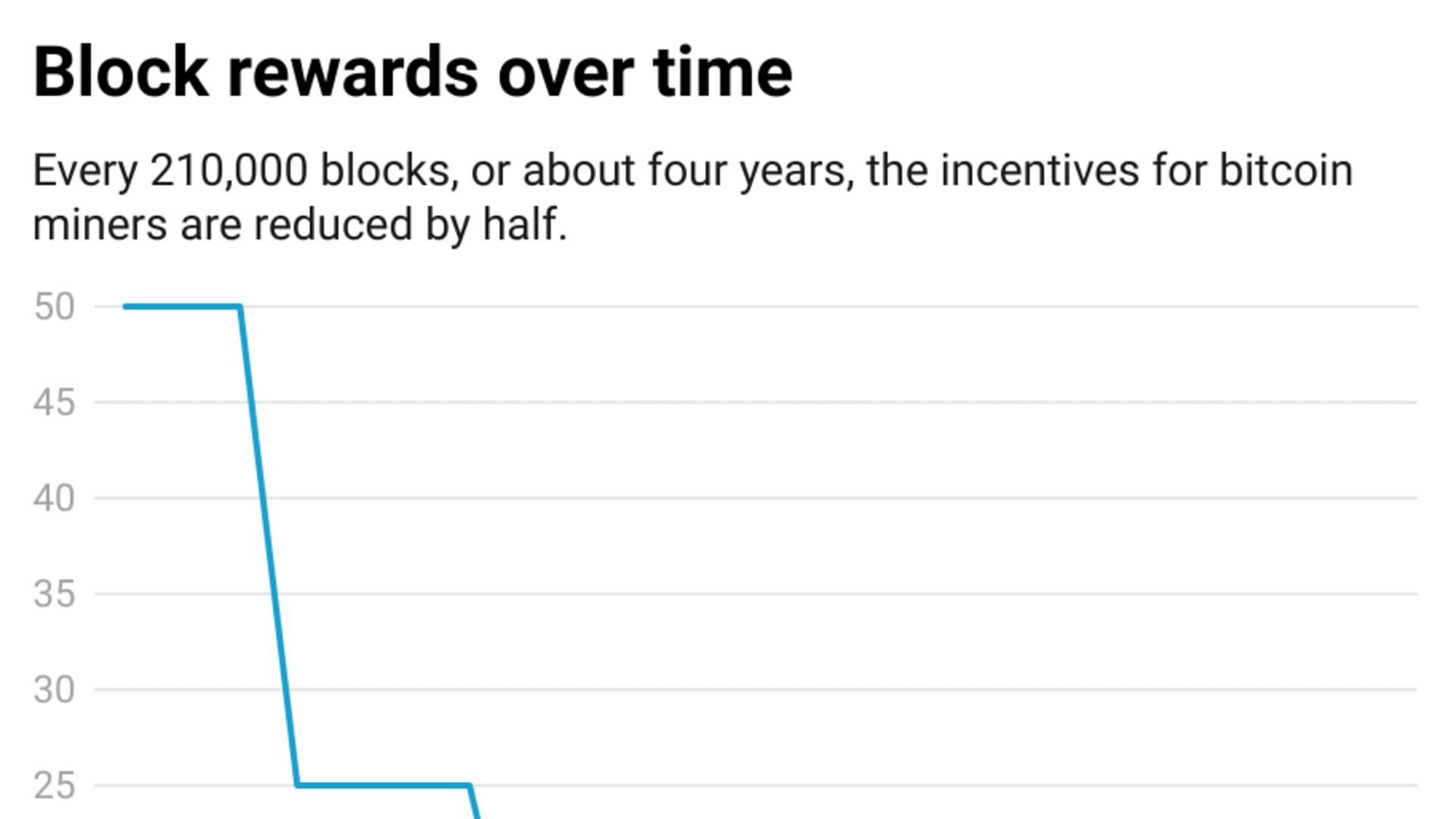Bitcoin just completed its fourth-ever ‘halving,’ here’s what investors need to watch now
3 min read
Dado Ruvic | Reuters
The Bitcoin network on Friday night slashed the incentives rewarded to miners in half for the fourth time in its history.
The celebrated event, which takes place about once every four years as mandated in the Bitcoin code, is designed to slow the issuance of bitcoins, thereby creating a scarcity effect and allowing the cryptocurrency to maintain its digital gold-like quality.
There may be some speculative trading on the event itself. JPMorgan said it expects to see some downside in bitcoin post-halving and Deutsche Bank said it “does not expect prices to increase significantly.” However, the impact may be bigger months from now, even if bitcoin continues its trend of diminishing returns from its halving day to its cycle top. Two key things to watch will be the block reward and the hash rate.
“While the upcoming Bitcoin halving will create a supply shock as the previous ones had, we believe its impact on the cryptocurrency’s price could be magnified by the concurrent demand shock created by the emergence of spot bitcoin ETFs,” said Benchmark’s Mark Palmer.
The bigger immediate impact will be to the miners themselves, he added. They’re the ones that run the machines that do the work of recording new blocks of bitcoin transactions and adding them to the global ledger, also known as the blockchain.
“Miners with access to inexpensive, reliable power sources are well positioned to navigate the post-halving market dynamics,” said Maxim’s Matthew Galinko in a note Friday. “Some miners, many that are not public, could exit the market with a combination of poor access to power, efficient machines, and capital. Miners with capital and relatively expensive power will likely find opportunities in the wake of potential consolidation and disruption driven by the halving.”
The block reward
Miners have two incentives to mine: transaction fees that are paid voluntarily by senders (for faster settlement) and mining rewards — 3.125 newly created bitcoins, or about $200,000 as of Friday evening, when the mining reward shrunk from 6.25 bitcoins. The incentive was initially 50 bitcoins.
The reduction in the block rewards leads to a reduction in the supply of bitcoin by slowing the pace at which new coins are created, helping maintain the idea of bitcoin as digital gold — whose finite supply helps determine its value. Eventually, the number of bitcoins in circulation will cap at 21 million, per the Bitcoin code. There are about 19.6 million in circulation today.
“Miners utilize powerful, specialized computer hardware to validate transactions on the Bitcoin network and record them permanently on the blockchain,” Deutsche Bank analyst Marion Laboure said. “This process, known as mining, rewards miners with newly minted bitcoins. But with each halving, the reward to mining is decreased to maintain scarcity and control the cryptocurrency’s inflation rate over time.”
The hash rate
Historically after a halving, the Bitcoin hash rate – or the total computational power used by miners to process transactions on the Bitcoin network – has fallen, pricing some miners out of the market. It generally recovers in the medium term, however, Laboure pointed out.
The network hash rate has been hitting all-time highs for months as miners tried to take market share ahead of the halving. Growth in the Bitcoin hash rate dilutes individual miners’ contribution to the network hash rate.
“In the past three halvings, the network recovered its pre-halving hash rate levels within an average of 57 days,” she said. “It is also likely that the current elevated prices of bitcoin may limit this short-term dip in the hash rate, as bitcoin miners enjoy record high profits in the lead-up to the halving.”
Palmer said the impact of the halving on bitcoin miners’ economics could be “more than offset over time” if bitcoin’s price rallies keep pushing the cryptocurrency to new highs in the months ahead.






